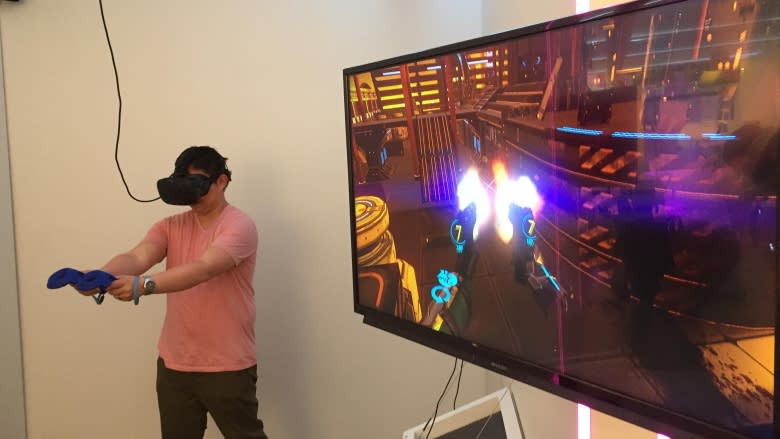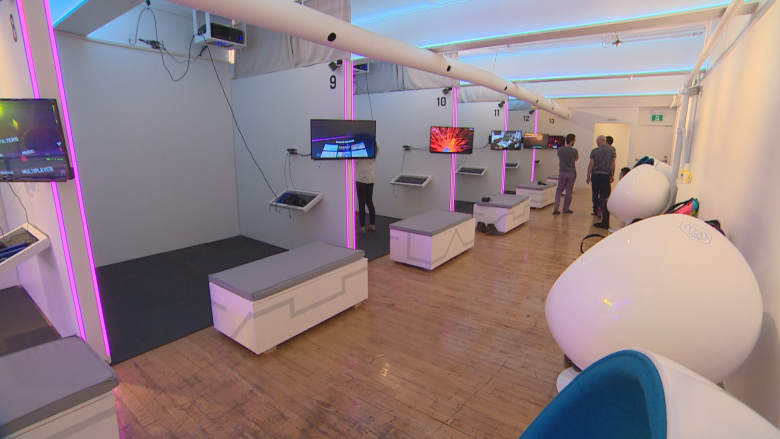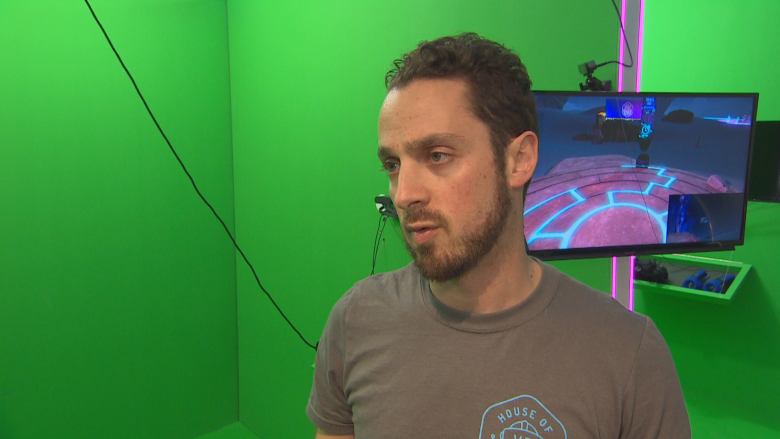Can Toronto's new virtual reality arcades avoid the fate of their predecessors?
With their padded walls, green screens and top-of-the-line hardware, a new crop of Toronto businesses want to make virtual reality (VR) arcades the city's next entertainment hotspots.
Within the last year, a handful of the arcades have popped up around the city, including House of VR, which opened near Queen and Bathurst in May.
Inside, customers pay to rent booths where they can strap on a headset and controllers hooked up to a high-octane gaming PC. Once they're geared up, they can do battle with robotic Samurai, traverse a fantastical landscape filled with orcs and goblins, or wander inside a three dimensional van Gogh masterpiece.
"I think the response to VR in Toronto has been incredibly strong, people are wanting to see what this new technology is about," said co-founder Jonah Brotman.
Just a few blocks north on College Street, the arcade VRPlayin powered up its headsets in April, its owners sensing growing public curiosity and technology that's finally ready for the mainstream.
"Virtual reality has reached a level where it can offer a user a really immersive experience without massive glitches or anything like that," said manager Leeanna Sweeney.
Since opening, VRPlayin's customers have ranged from corporate parties to couples on a date night.
"We didn't fully know what to expect, kind of opening up the market for virtual reality experience centres, and we've been really pleasantly surprised," Sweeney said.
"Most people think VR is five to 10 years away, we say just come in and see it, and your mind will be blown," said Brotman.
A new type of arcade
With virtual reality technology still prohibitively expensive for many consumers, VR arcades can, at the moment, offer an experience that's hard to replicate at home.
Beyond the cost of equipment — the HTC Vive headsets used at both House of VR and VRPplayin cost more than $1,000 and require even more expensive PCs to operate — the arcades offer a large space in which customers can roam their virtual worlds.
"At this stage, just from a practicality standpoint, I think the arcades are a great idea," said Ramona Pringle, a digital media professor at Ryerson University and CBC technology columnist.
Pringle believes VR spaces may stand a better chance at survival than the traditional video game arcades that once dotted the continent.
But to achieve long term sustainability in a future where in-home VR systems become cheaper and more sophisticated, she says the businesses will have to provide a unique and engaging social experience.
"Some of these arcade settings where it is a social event, where it's like going out to the movies or it's like going to an amusement park with your friends have a lot of potential," she said.
Overcoming the novelty factor
After just a few months in operation, Toronto's new VR spaces acknowledge that a big portion of their business is being driven by the simple novelty of a new technology.
At House of VR, Brotman says 90 per cent of the public has never experienced virtual reality with their own eyes. And once they do, he knows the clock starts ticking.
"We think over time, people will get bored of VR — traditional VR as it is right now," he said, just minutes before demonstrating a game where the player deflects energy balls timed to music.
While games like that make up a large part of VR's appeal in 2017, Brotman expects that to change. To that end, he's quick to point out that House of VR will not tie itself strictly to games, but instead try to offer the most innovative experiences the medium can offer as it grows.
"People will be looking for unique ways to interact with this new technology and we absolutely want to be at the forefront," said Brotman.
Pringle too says keeping the medium fresh and interesting will be critical.
"The novelty might be what first pulls people in but if the experiences are good they might keep coming back," she said.





